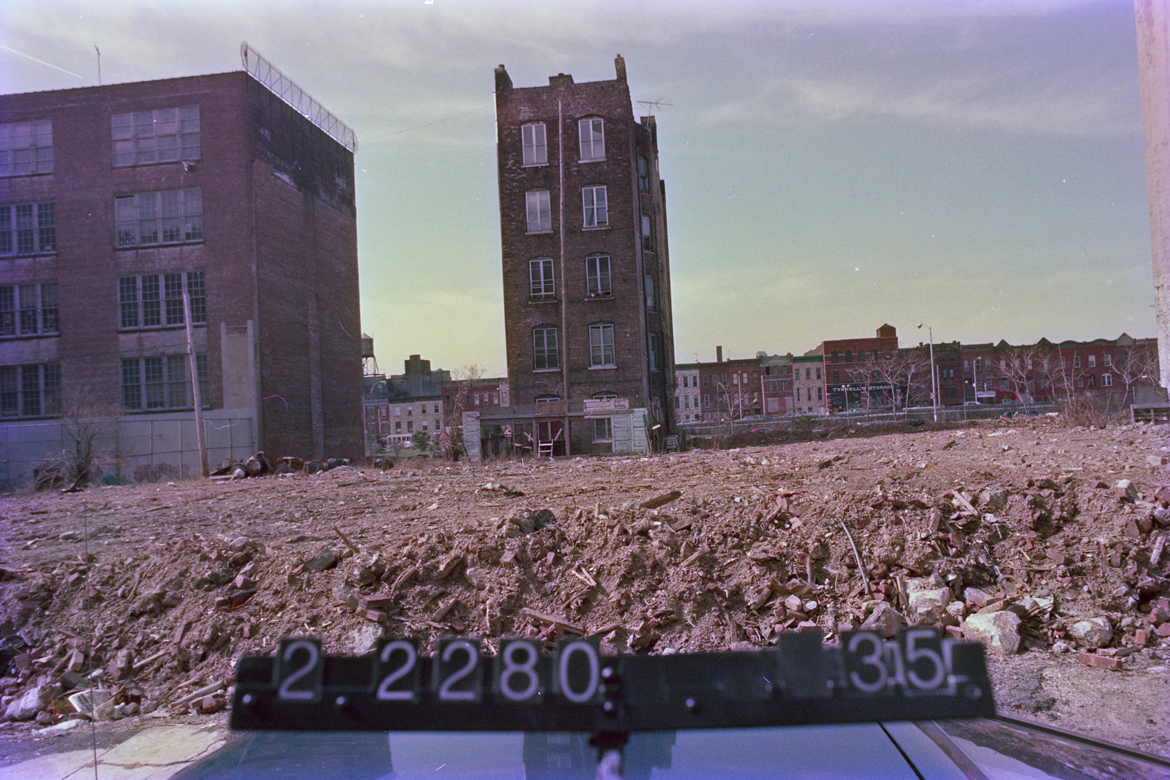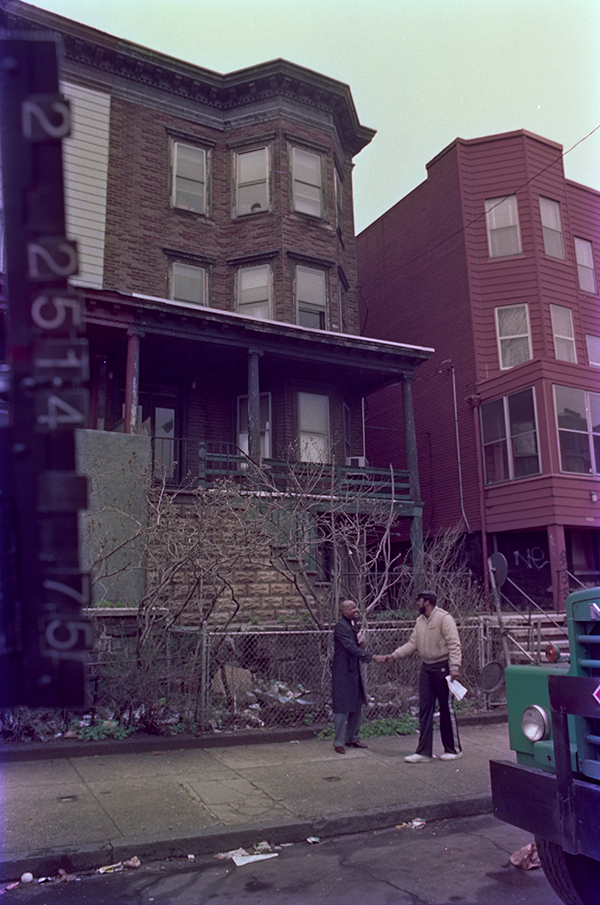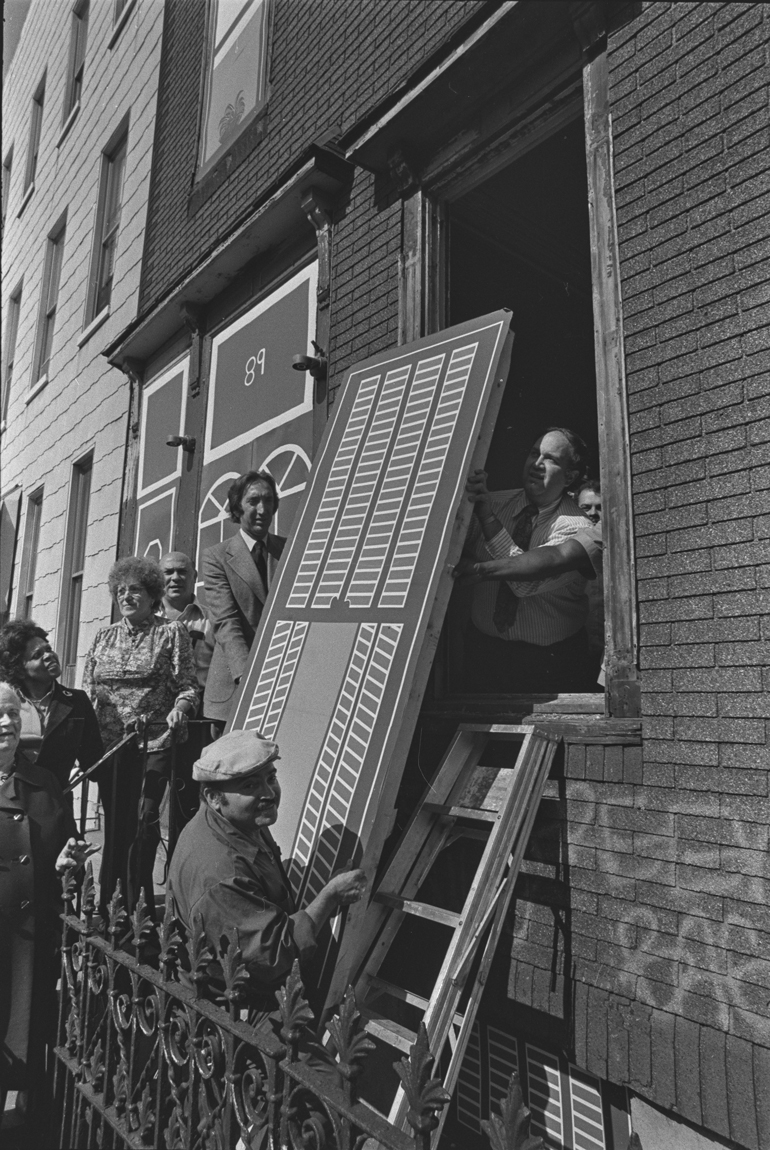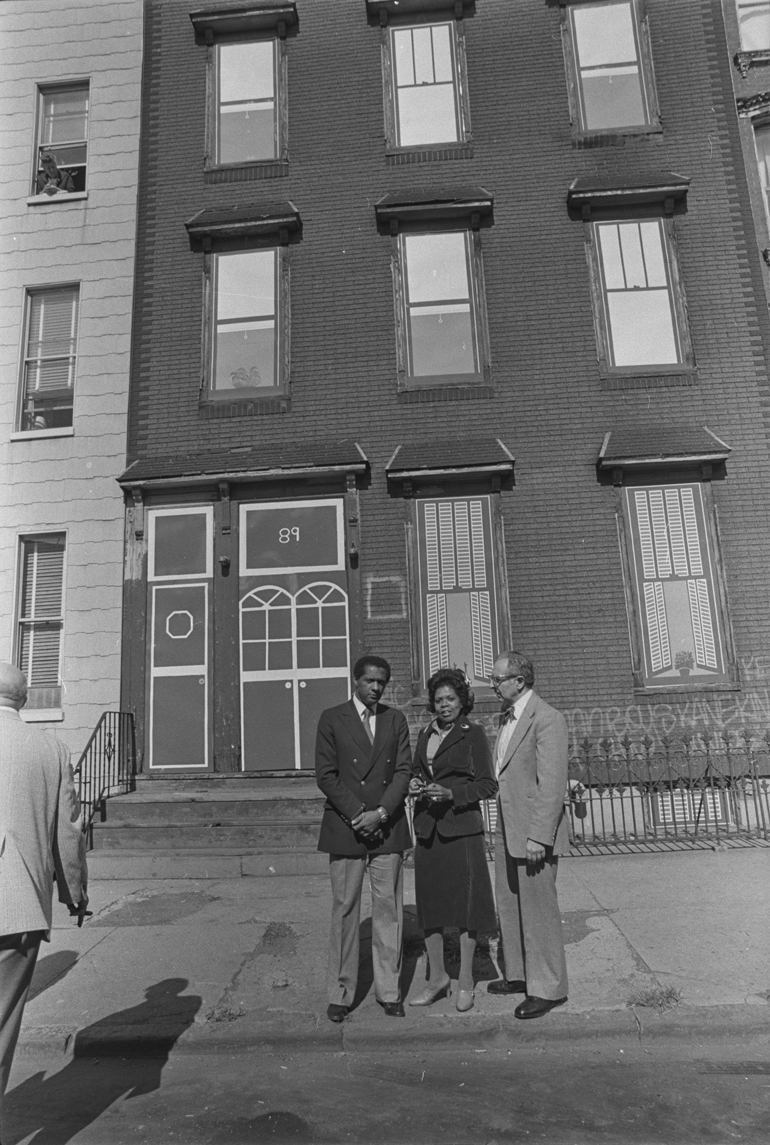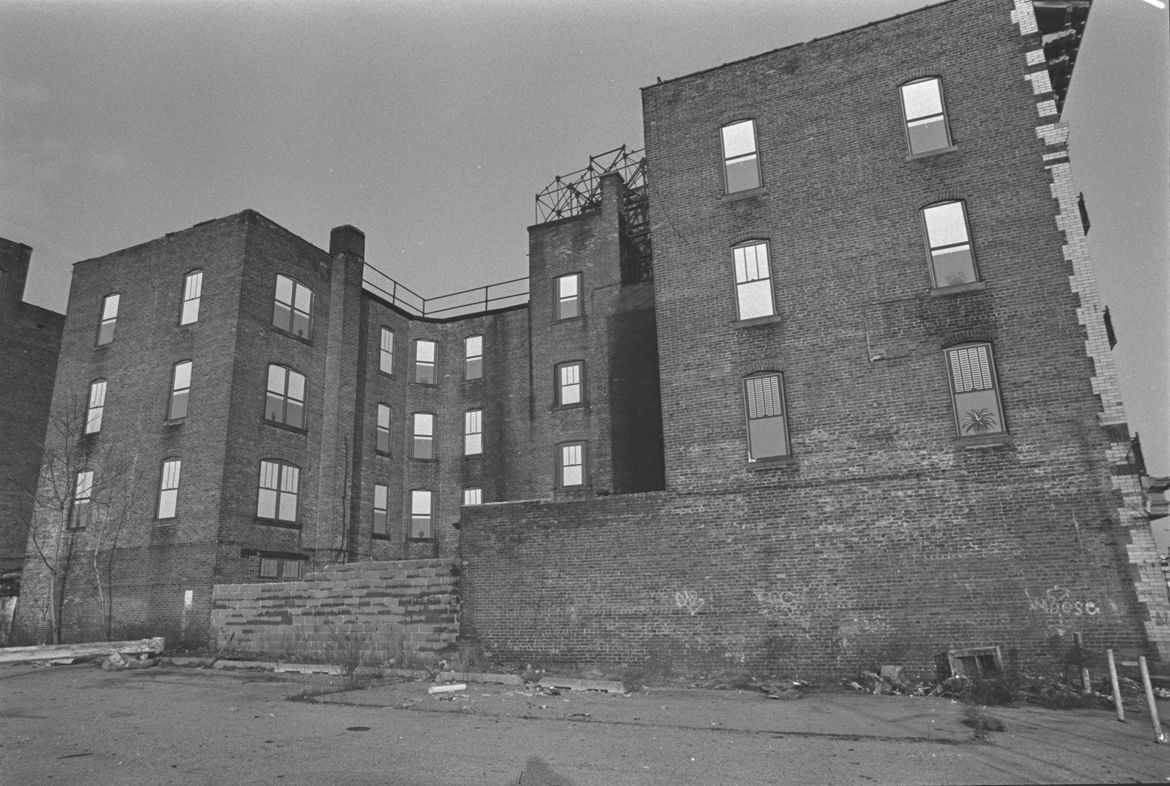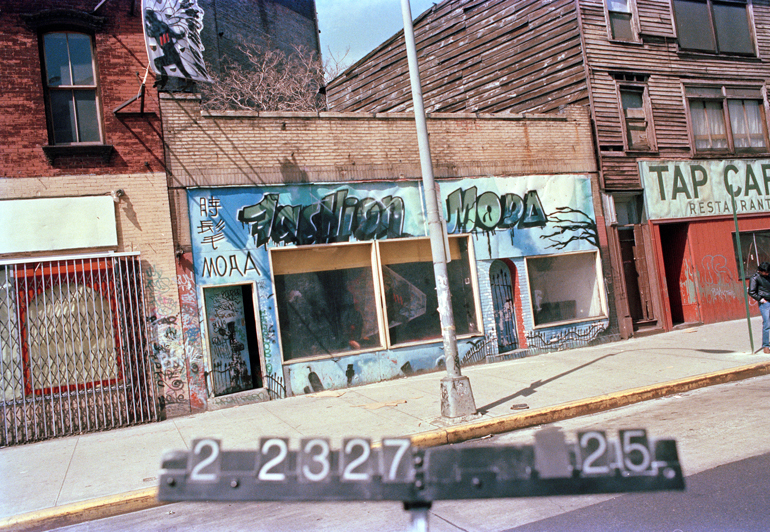
We are celebrating 15 years — and counting — of stories that are deeply researched and deeply felt, that build a historical record of what the city has been.
We are celebrating 15 years — and counting — of stories that are deeply researched and deeply felt, that build a historical record of what the city has been.
The South Bronx, writes Peter L’Official, “is more a projection than a real place, an invention of many needful imaginations.” His new book, Urban Legends, plumbs the images — photographic, literary, and sometimes literally on the walls — that made the neighborhood an international symbol for racialized urban decay. In doing so, he exposes the great distance between these portrayals of a neighborhood in/as ruins, and the lived experience of generations of Bronxites. And distance, writes Johana Londoño, “is an important factor for cultivating an affinity for the barrio.” Abstract Barrios, her new book, illuminates the processes through which designers, planners, and other urbanists have reinterpreted abstract visual characteristics — bright colors, especially — to redeem Latinx neighborhoods in the US from a similarly racialized “decline.” A wide range of artifacts, real and imagined, help quell white anxieties about “other” landscapes, from popular movies and novels, to awnings and window coverings. The two scholars study the stories behind those masks, and how neighborhoods are constructed for outsiders’ eyes. Below, Londoño and L’Official talk about bridging the distance between these dominant visions and the ways people determine their own ways of living in marginalized environments. Their conversation is a guide to looking beyond narratives so entrenched they are hard to recognize as specific — and specifically white — points of view.
This might be a weird place to start, but I’d like to talk about whiteness. One of the things that struck me is how central whiteness was to a lot of the design imperatives in your book, and how, in retrospect, it lurked behind a lot of things in my book too. It seems weird to say, because obviously neither one of us wanted to write books about whiteness, but it lurks around the corner, or behind, so many things. Even when one is trying to design or imagine or represent non-white places, whether individual apartment buildings or whole downtowns, they get represented as “other” because the center is whiteness.
Exploring the aesthetics of whiteness is really important, because there’s been, for decades now, this push for diversifying urban professions: fields such as architecture and urban planning, which we know are majority-white. They’re not a reflection of the larger population in the United States. But I think the question is: As these fields gradually become a bit more diverse, how is that diversity unfolding? Is it just a matter of bringing more Latinx and Black architects and urban planners to do the same kind of design that upholds whiteness, that upholds a capitalist structure, that is not going to incorporate some of the most marginalized consumers? Or is it going to attempt to be much more inclusive in all aspects of design: not just the individual who’s doing the design, but the kind of designs that we see in the built environment and the people who get to use these designs? I think that becomes really important to talk about as we keep moving along a diversity imperative of the late 20th and early 21st centuries.
In our books, we’re both unpacking the many individuals — the authors, social scientists and filmmakers — who are contributing to, and shaping our perceptions of, the built environment. A lot of built environments in our most marginalized communities have been reconstructed and redesigned by people who don’t have professional design degrees. So it’s important to talk about all of these other individuals who add to the built environment, or who add narratives about the built environment.
There’s an aspect of whiteness that is inescapable, even when you’re trying to center other voices, or to imagine how folks were trying to represent themselves outside of whiteness. That’s something that was certainly at the heart of thinking about how characteristics of the built environment are imputed upon Latinx and Black populations.
A lot of those characteristics are stigmatizing, like ruin, decay, and blight, which you discuss so well in your book. But also, some of them are not always immediately stigmatizing, such as bright color. Or, consider density: Some of my interviewees would say, “Look at the way that Latinxs live, they live in really dense environments, and this is good for the environment — this is what urbanism should embrace about barrios.” And yet, once we dig deeper, we realize that some of those celebratory characteristics can also stigmatize populations. They can be easily retooled and used against people of color. Density is a characteristic that is now being, again, put at the center of debates about the city and the future of the city. At the beginning of the COVID-19 pandemic, density in working-class and poor communities of color was demonized for propagating the virus, yet some urbanists and news reporters were quick to point out — to the benefit, I imagine, of realtors and landlords worried about mass out-migration from urban areas, especially wealthy neighborhoods — that density was different from crowding: the latter being what, in their view, was spiking COVID-19 cases among the racialized poor. It’s as if they were suggesting that Latinxs can’t even do density right.
These characteristics that are imputed upon communities of color are also stereotypes. And some of them hurt more than others. Some folks might say, “We are colorful, that’s not a bad thing. That’s a good thing, right?” I don’t know that a lot of people say, “Yes, the Bronx is a ruin, and that’s a good thing.” But I think there are ways in which these characteristics, both positive and negative, are sort of insidious. People begin to internalize them; they begin to think: Yes, that’s my neighborhood, and maybe that’s what I should embrace about my neighborhood.
One of the striking things about novelist Abraham Rodriguez Jr., a Puerto Rican South Bronx native, is that his own writing of the Bronx demonstrates a lot of that internalization of how the Bronx was looked at. By then the Bronx had been thought of as a ruin for 10 or 15 years already. That was a part of his lived experience and lived reality. One of the reasons I write about Rodriguez is that his vision inverts the gaze, so to speak, and offers a rare glimpse of how the South Bronx looked not only at itself but also at the world around it.
Most of the way that the Bronx had been thought of was as a kind of another country, almost as a third world. But from his perspective, from the perspective of the characters about whom he was writing — Puerto Rican and Dominican kids from the Bronx — to them, the rest of New York was another country. This is my experience too: I never went to Brooklyn as a kid! Brooklyn was this foreign place, it took a really long time to get there. “The Other” isn’t always the other; whiteness sometimes is the other, especially to the folks who have been othered. And sometimes that can be a good thing. That can be generative, for ways of thinking about self-worth and self-care.
Urban latinidades, the Latinx cultures that shape cities, are curated by whiteness. The ways in which these cultures manifest in the built environment has a lot to do with white desires. There are certain requirements for what would make a good-looking urban place, and a lot of those features are imposed by white urban elites on these neighborhoods of color. And so certainly whiteness is there, even when we want to center the voices, the design, and the aesthetics of people of color.
You write so wonderfully about color, and how it both means a lot, but also can mask a whole host of other notions.
I’ve always been fascinated by what color can do in and of itself, but also its social aspects. I think this has to do with my training as a designer. And I just kept thinking about color as I was reading about and analyzing the built environment of places such as Santa Ana, California; Union City, New Jersey; and the Lower East Side of Manhattan.
A lot of folks who have done research on barrios in the United States have discussed color: it inevitably comes up. In the case of Mike Davis, it’s partly what makes it so “magical.” We see that happening over and over again when people talk about Latinx contributions to design, be it in the built environment, or in fashion. In the book I explain how color has been used to abstract Latinx urban cultures in the built environment and indirectly other Latinx populations.
In thinking about whiteness, and specifically a kind of aspirational whiteness: What does it mean to design an interior that has, say, exposed brick instead of a colorfully painted wall? Can whiteness be reduced to those exposed Edison bulbs hanging from the ceilings of fancy coffee shops, or subway tiles behind the fancy espresso machine? Are those signifiers of whiteness? Are those signifiers of just an aspirational shop owner in a neighborhood, that might or might not be a Dominican or Puerto Rican owner of a new South Bronx coffee shop? Those decisions are so fascinating to think about, because I don’t know if there are answers to those questions.
It’s really important to talk about the whiteness that shapes our built environment; including the whiteness in our communities. It’s not just an “us versus them” kind of relationship. In my research on Union City, I found that some light-skinned Latinx people wanted to change the built environment in ways that they believed would heighten their whiteness, and that would heighten their racial and social position in society. One light-skinned Colombian beauty salon owner that I interviewed wanted to distinguish herself and her business from the décor of previous Dominican owners by adding “neutral” beige and white colors to the exterior of the building. These colors, she surmised, would appeal to non-Latinx, white gentrifiers. They’re trying to carve out the privilege of universal appeal that comes with whiteness in the United States.
What’s most important is to try to center that many marginalized folks’ understandings of the built environment, whether they’re more rural environments, or highly urbanized ones, are incredibly sophisticated, but in ways that maybe folks who are outside of those communities can’t or don’t want to see. Because the way that more marginalized folks navigate those communities — to get back to where we started — is erased for folks whose world is one that’s surrounded by whiteness, and for whom the way that whiteness inscribes, and is inscribed, upon a particular space, is the only way that they have ever known how to understand this space. And maybe the ways that immigrant communities and other marginalized folk who might have moved to a particular place learn to navigate that space are actually either better or more ingenious than folks have been able to, or even wanted to, give them credit for.
And the ways that folks navigated their spaces before they immigrated are certainly worthy of study, and how folks have transposed those ways. I’m thinking about the historian Brian McCammack’s wonderful book, Landscapes of Hope, and the ways that Black folks during the Great Migration moved north to places like Chicago or New York and manifested new ways of using urban parks and other hinterlands around. It’s like an unseen sophistication that folks might have for the city’s ways, that folks have adapted to cities over the generations. One doesn’t necessarily have to assimilate. One can remake parts of the city in ways that work for them.
People have ways of navigating the built environment that may be very much removed from the ways that policymakers or professional urban planners or architects deemed to be valuable or correct ways of navigating the built environment. We see that a lot with the Latinx population. And in part, this is what architects and planners like James Rojas, and to some extent, also Henry Cisneros and Henry Muñoz, are trying to correct. They’re saying, “Look, Latinx populations understand the city, they navigate the city in ways that urban planning fields and architecture fields should be learning from, rather than stigmatizing their particular use of space.” We see a lot of this sort of back and forth, especially in the early 2000s, of folks saying, “We need to understand Latinx urbanization as a contribution to the fields of urban planning and architecture, rather than as a challenge or a ‘problem’ to the city.”
It’s trying to unseat the narrative of marginalized communities moving from one place to another and somehow being immediately unsuitable for an urban environment, and contributing to the urban detritus because they supposedly don’t know how to live in apartment buildings, per se. And that narrative is one that, I think we know today, is entirely bogus.
A lot of the work that we do has to do with storytelling and narrative; and that may be, from my perspective, one of the most effective ways to create a narrative out of things that might be totally disparate. How do those spaces and places cohere?
There also may be ways that you and I think about the places that made us. We have certain ways that we understand places, like the kinds of narratives that I invented on the way to or from school, or placed along the kinds of buses and trains that I took. I remember particular things that are brought back to me every time I pass by a particular street corner, or this street sign might jog a particular memory. Looking at cities or streets or highways, or things like the window decals: I remember riding in the back of my parents’ car and looking out and seeing these strange fake windows alongside the Cross Bronx Expressway or the Bruckner Expressway, and just marveling and wondering, like, “What are those things, they look like something that I could have done.” They kind of look like how we learn to draw buildings when we’re young. And it’s those kinds of memories that draw me back.
I was trying to think about cultural artifacts that have an abstract sense to them, like photography or trompe l’oeil, that would be maybe opaque to the normal viewer; but at the same time, have a use as practical as the shutters or curtains or French doors that the trompe l’oeil version of those shutters or curtains would.
A lot of the art that I write about did things to people, as opposed to sat on the wall in a museum. This was “art” that was put onto city streets in a different way that a mural would be. Thinking about the architectural “building cuts” of the artist Gordon Matta-Clark in the South Bronx that revealed so much of the internal structures of buildings and the lived residues of their residents in conjunction with this particularly bizarre trompe l’oeil project that the New York City municipality engaged in: putting up these decals in windows and doors, which is interesting, strange, maybe a bit insidious too. Also, not wholly evil. It was trying to put this massive warehouse of buildings into a kind of cold storage, and trying to prevent folks from entering abandoned buildings — which is a laudable goal. But at the same time, the project was so rudimentary, and cynically designed mainly for buildings that line thoroughfares, where white folks would be driving through the Bronx from Connecticut or New England. It was trying to mask the kind of ruin that was prevalent in some parts of the Bronx. Nothing is ever just one way: it had benefit to folks who lived in a particular neighborhood in one way, but also it was trying to erase those same folks, by suggesting that nothing was wrong here, or masking that from the eyes of people, in the eyes of the municipality, who maybe mattered more than the people who lived there.
We’re both trying to examine this mask. You do it through myths, and I do it through abstractions. I think we’re both saying that the visual is seductive, and that it’s telling some story, and we’re trying to dig deeper and see what that narrative is actually doing, and how that narrative is affecting the people who live in these neighborhoods. But a reader might say, then, “Why didn’t you talk about the real material life of the neighborhood? Why are you so busy talking about the visual? Why are you so busy talking about the built environment?” I was torn between wanting to be true to those real lives, and also wanting to contribute to this larger scholarship about the built environment.
We both write about places that we grew up in at a certain point, so I’m wondering: Was that always something that you wanted to do? Was that in any sense difficult for you?
Union City was always on my mind. I wanted to tell the story of the city that I grew up in, and no one else at that point had done so. There was this understanding that New Jersey is all suburban, except maybe Newark or Camden. And then much of this urban corridor along the Hudson River gets lost. And I wanted others to be able to read about the place that they grew up in.
The preface of the book relates my personal experience because I needed to explain that the marginalized individual was always present in my research, even if most of the book is about people with a certain amount of professional or economic privilege — the so-called “broker,” which encompasses multiple individuals including urban planners, architects, business owners, and others who have the power to shape the built environment. Telling my personal story — which is a story about urban marginalization, being marginalized from property ownership and urban change, and how that can affect low-income families, including my own — was a way to understand how some of those stories are sometimes just really so hidden from view. These stories don’t really get told. And yet when we write about these professionals, always underlying that is the story of marginalized individuals. In all of this abstraction, there’s this real experience. There are these material consequences; there are people who are living lives that are oftentimes not being told, not visible to the naked eye.
Like you, I wanted to avoid telling the story that I had grown up with. Hip-hop is a thing that is most associated with the Bronx. That actually drew me away from wanting to write about music: this way that the world receives its notions of the South Bronx, whether it is as a place that is perpetually ruined, or a place that birthed this way of being and way of life that is still with us with us today. But there can never be just a single story for a particular place.
You suggest that one of the reasons we’re attracted to abstractions and myths is because they are so seductive. I also think that those myths and abstractions are so effective because those narratives are really interesting. Whether they’re someone thinking one population is less vivid than another particular population, or just trying to unseat received wisdom in terms of thinking about a particular sentence that describes the Bronx that the person never actually said — the Howard Cosell quote about “the Bronx is burning” — that’s a thing that we’d like to think happened, but it actually didn’t. Though we, as researchers and writers, want to dig deeper and tell the stories that undergird or maybe unseat those myths and abstractions, it’s important also not to lose sight that those myths and abstractions are interesting in and of themselves, and it’s in examining how they came to be that we find those other stories.
The views expressed here are those of the authors only and do not reflect the position of The Architectural League of New York.

